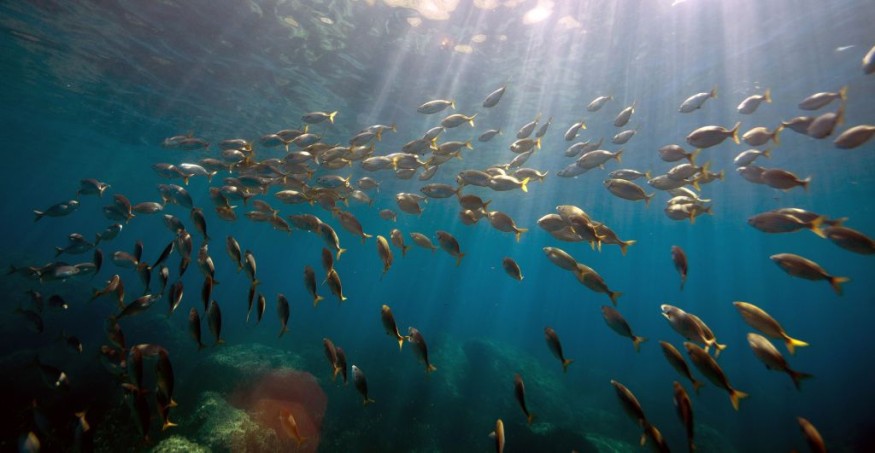An unknown sea cucumber species with an appearance similar to an alien shopping bag and a gut made of glowing "Cheetos" was reported by scientists during their sea exploration aboard the research vessel Nautilus in the Central Pacific Ocean.
The deep-sea creature reportedly surprised the scientists as such morphological appearance has never been seen before, in spite of the growing taxonomic knowledge of sea cucumbers or holothurians.
Unknown Sea Cucumber Species

In new footage captured by a remotely operating vehicle (ROV) by Nautilus researchers, the bizarre creature was found at a depth of approximately 7,221 feet (2,201 meters) under the Pacific Remote Islands Marine National Monument, situated southeast of Honolulu, Hawaii, according to a published article by Live Science.
The ROV was conducting a deep ocean exploration of the unexplored seamount at the Kingman Reef and Palmyra Atoll of the said Pacific Ocean area when the said unknown sea creature was spotted by the operators, according to Megan Cook, director of education and outreach at the Nautilus Live of the Ocean Exploration Trust, who told Live Science.
Cook reportedly said the discovery of the incredible animal was exciting and spectacular.
On its Nautilus Live website, the said sea expedition is part of the Ocean Exploration Trust and the Nautilus Exploration Program to search for new discoveries in the fields of biology, geology, and archaeology while conducting scientific sea exploration of the ocean floor.
Sea Cucumbers and Echinoderms
The marine animal sea cucumbers (Holothuroidea) are found on the sea flood across the globe.
Characterized by an elongated body with leathery skin, holothurians belong to the family Phyllophoridae and phylum Echinodermata.
Echinoderms are a group of marine invertebrates with animals, aside from sea cucumbers, including brittle stars, starfish, sea urchins, and sand dollars.
In the discovery made by the Nautilus ROV, Cook said the mysterious alien shopping bag creature belongs to a family called Elpidiidae.
This family of deep-sea cucumbers is known for being scavengers of marine snow, marine skin cells, and poop, as well as small pieces of dead animals blown down to the ocean floor.
In addition, the Nautilus director also highlighted the bright orange intestine or gut of the ocean creature, which resembles the food "Cheetos," an orange, curve-shaped snack.
The said internal organ is seen from the transparent sea creature, which digests organic material using its sticky tentacles to eat it.
The animal also excretes non-edible organic material like sand from its digestive tract.
Ocean Exploration
The Nautilus ROV footage was taken in March this year.
The discovery also adds to the mounting evidence that an unspecified number of unknown species are waiting to be found in the Earth's oceans, as scientists have only explored a small portion of them until now.
According to the National Oceanic and Atmospheric Administration (NOAA), most of our ocean is still unexplored, accounting for only 5% of the sea is explored and leaving 95% remaining unknown.
Furthermore, the NOAA says the deep ocean remains poorly understood, but understanding deep ocean impacts is crucial for our survival.
Related Article: Alien-Like Jurassic Sea Creature Fossil Found in the UK
© 2025 NatureWorldNews.com All rights reserved. Do not reproduce without permission.





